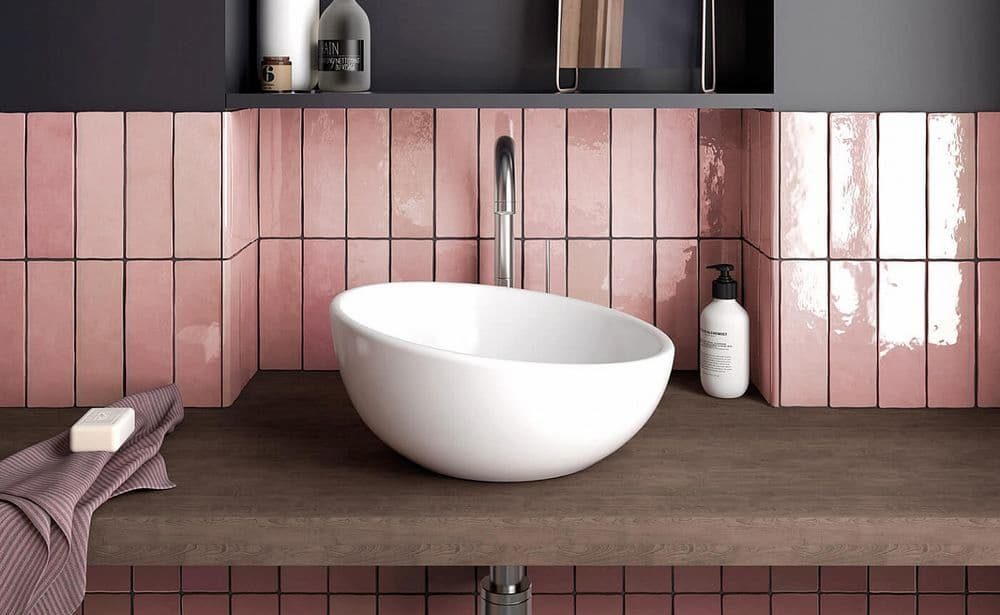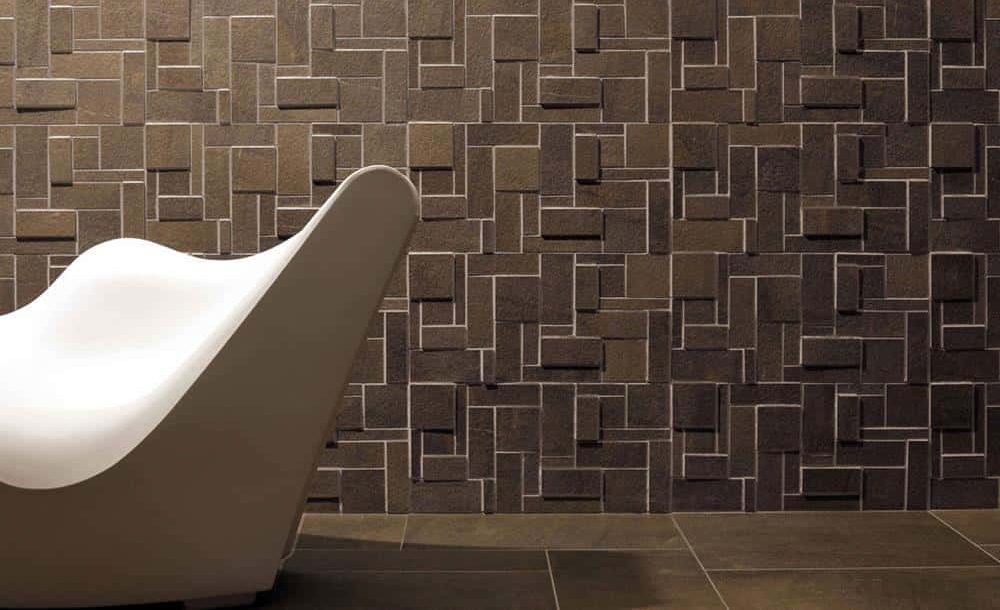Ceramic tile floors, especially floating type provide the enticing potential of preserving the greatest properties of tile while reducing a significant number of the tile's unpleasant installation characteristics. There has been always a competition between this type and traditional type. This is an attractive prospect. Is it possible for floating floors to take the place of the traditional wet procedure that is used to lay ceramic and porcelain tile? A floating tile floor looks to be every homeowner's dream on the surface because it enables the accurate and predictable installation of real ceramic tile. However, this is only true on the surface (as opposed to resilient tile). Because the tiles are adhered to plastic trays that are designed to interlock with adjacent trays, there is no requirement for thin-set cement to be used. In addition, the trays will automatically regulate alignment and distance between the tiles. 
Floating Tile vs. Traditional Tile
The floating floor technology in tile industry is widely utilized for the installation of various other types of flooring, including laminate and luxury vinyl tile and traditional tile. Floating flooring is only ever attached to itself; it is never attached to the walls or the surface below. Friction and the tremendous weight of floating floors work together to ensure that the flooring remains in place. Elimination of the Mortar Tiles laid in the traditional manner are spread out on a bed of thin-set mortar, which is then troweled over the flooring or underlayment. When laying tiles, this trowel will automatically extrude the appropriate amount of mortar into the tile joints. In addition to securing the tile to the lower substrate, the mortar also fills in any spaces that may exist between the tile and the substrate. Floating tile does not require a mortar base to be installed. Instead of using mortar, the tiles are set into position using plastic trays that have some of the same properties as mortar but not all of them. The tile cannot be removed from the plastic trays that are retaining it. The Use of Adaptive Spacing Traditional tiles always have to be installed with seams, and the grout is used to fill those seams. Making junctions that are completely smooth is difficult for a lot of tilers. Tile spacers in the form of a cross are an effective tool for creating seams of the appropriate width. After some time has passed, the spacers are removed from the tile. The plastic trays that are used as spacers in floating tile are, in essence, already included in the final product. The teeth on the plastic trays click into one another, allowing adjacent tiles to be joined to one another. The typical width is three sixteenths of an inch.  The process of Applying Grout In conventional tiling, sanded or unsanded grout is pressed into the seams between the tiles using a rubber trowel called a float. In modern tiling, the seams are filled with thinset. Sanded grout typically contains very small grains of sand. Unsanded grout, which does not contain any sand, is recommended for use in areas with thin grout lines. Because it is able to accommodate tiny shifts and motions in the floating floor system, floating ceramic tile requires a grout that has a urethane basis as its foundation. Floating tile floors have both positive and negative aspects to consider. Pros:
The process of Applying Grout In conventional tiling, sanded or unsanded grout is pressed into the seams between the tiles using a rubber trowel called a float. In modern tiling, the seams are filled with thinset. Sanded grout typically contains very small grains of sand. Unsanded grout, which does not contain any sand, is recommended for use in areas with thin grout lines. Because it is able to accommodate tiny shifts and motions in the floating floor system, floating ceramic tile requires a grout that has a urethane basis as its foundation. Floating tile floors have both positive and negative aspects to consider. Pros:
- Tiles with automatically determined spacing
- There is no need for a mortar bed.
- decreased or completely erased lippage (the vertical difference between neighboring tiles).
- installation time is cut in half compared to traditional ceramic tile.
Cons:
- There are not many manufacturers, hence there is a restricted supply of floating tile flooring.
- The plastic backing must also be cut, which is an additional step in the cutting process.
- There is no ability to alter the seams' width or length in any way.
Expensive in Comparison to Regular Tile Should You Buy a Product in Order to Install Floating Tiles on Your Floor? Is the concept of floating tile flooring just another utopian ideal that will never be realized? In the beginning stages of the process, many original concepts are met with skepticism on the way to being accepted. Laminate flooring can be used in lieu of solid hardwood flooring, PVC trim can be used in place of wood, and Tyvek house wrap can be used in place of tar paper.  These are just a few examples of how OSB can be used in place of traditional building materials. Would floors made of floating tiles count as one of these game-changing innovations? The inventors of the Kwik-Tile product, which is no longer manufactured, undertook studies to determine whether or not a floating tile floor could be laid more quickly than a traditional tile floor and, if so, by how much. They found that their floating tile product rose up an average of 72% faster when installed over an existing sheet vinyl floor. This was one of their discoveries. This corresponds to the capacity to start grouting 200 square feet of floating tile flooring in five to six hours as compared to the 18 to 22 hours that would normally be required for a conventional installation. In addition, the amount of time needed to clean up was reduced as a direct result of there being fewer things and messes involved. One of the pioneering products in the field of floating tile floor systems was marketed under the name Edge. It was constructed using tiles measuring 1/16 of an inch in size that were bonded to a laminate core board structure. In spite of the fact that the tile featured an original design, it was prone to cracking when subjected to the standard weight loads. The Edge only existed for a short time, and the business itself is no longer in business today. With the introduction of plastic tile trays and thicker ceramic tiles, the problem of cracking has been addressed and, for the most part, rectified. The vast majority of well-bonded vinyl floors, wood floors, concrete floors, vinyl tile, plywood, and OSB subfloors can be installed directly over floating tile floors with very little to no additional floor preparation required. This is because floating tile floors do not require grout or adhesives.
These are just a few examples of how OSB can be used in place of traditional building materials. Would floors made of floating tiles count as one of these game-changing innovations? The inventors of the Kwik-Tile product, which is no longer manufactured, undertook studies to determine whether or not a floating tile floor could be laid more quickly than a traditional tile floor and, if so, by how much. They found that their floating tile product rose up an average of 72% faster when installed over an existing sheet vinyl floor. This was one of their discoveries. This corresponds to the capacity to start grouting 200 square feet of floating tile flooring in five to six hours as compared to the 18 to 22 hours that would normally be required for a conventional installation. In addition, the amount of time needed to clean up was reduced as a direct result of there being fewer things and messes involved. One of the pioneering products in the field of floating tile floor systems was marketed under the name Edge. It was constructed using tiles measuring 1/16 of an inch in size that were bonded to a laminate core board structure. In spite of the fact that the tile featured an original design, it was prone to cracking when subjected to the standard weight loads. The Edge only existed for a short time, and the business itself is no longer in business today. With the introduction of plastic tile trays and thicker ceramic tiles, the problem of cracking has been addressed and, for the most part, rectified. The vast majority of well-bonded vinyl floors, wood floors, concrete floors, vinyl tile, plywood, and OSB subfloors can be installed directly over floating tile floors with very little to no additional floor preparation required. This is because floating tile floors do not require grout or adhesives.  The vast majority of unsuccessful ceramic or porcelain tile floors are the result of faulty floor preparation and the use of inappropriate setting materials. Using floating tile eliminates these potential failure zones, hence preventing potential failures throughout the entirety of the floor. Additionally, it is designed to self-align and distance the joints, particularly for vertical alignment and for the purpose of lowering the likelihood that there would be lippage issues, which are potentially hazardous. Investing in a product that features floating tiles is an option worth considering if you are working with a constrained area and have any reservations about installing conventional tile. As a professional team in exporting diverse types of ceramic tiles, it will be our pleasure to cooperate with adept traders in tile industry.
The vast majority of unsuccessful ceramic or porcelain tile floors are the result of faulty floor preparation and the use of inappropriate setting materials. Using floating tile eliminates these potential failure zones, hence preventing potential failures throughout the entirety of the floor. Additionally, it is designed to self-align and distance the joints, particularly for vertical alignment and for the purpose of lowering the likelihood that there would be lippage issues, which are potentially hazardous. Investing in a product that features floating tiles is an option worth considering if you are working with a constrained area and have any reservations about installing conventional tile. As a professional team in exporting diverse types of ceramic tiles, it will be our pleasure to cooperate with adept traders in tile industry.
